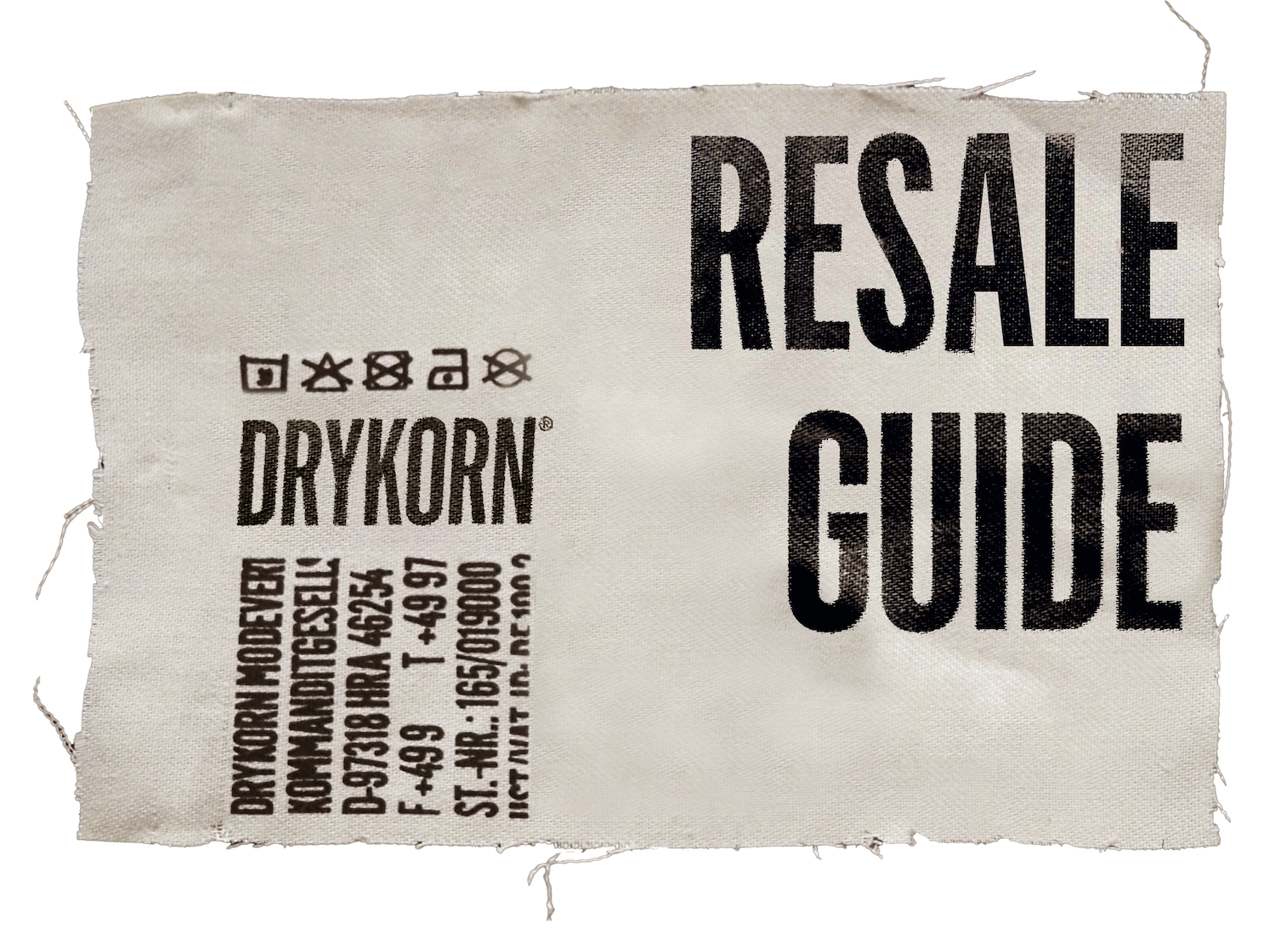Please select your country and language

It happened, the connection between you and your favorite DRYKORN piece has faded. What was once your favorite companion is now collecting dust in your closet. If it is that moment, we think it's time to make space, take your role in an emerging circular economy and give your garment a new lease of life. In this resale guide, we provide you with the most important tools for selling your clothes.
First of all, it has never been easier to resell clothes than it is today. Due to the nature of the fashion world, only very few items can be sold for anywhere near the price you bought them for. It's best to sort your clothes and organize them into different categories. This way, you can assess your sales opportunities in advance and manage your expectations accordingly. In addition to basic aspects such as personal taste, condition and size, there are individual categories that usually sell well.
You should not resell garments that fall under one or more of the following categories:
However, it does not mean that an item is easy to sell if it falls into one or more of these categories. Designer clothing, for example, has the problem that private individuals are hesitant or even afraid to buy from other private people since there is an increased risk of getting scammed with fakes. An original invoice, packaging material and hangtags can make the difference between “buying” and “not buying” for people interested in second-hand designer clothes or limited-edition sneakers.
In summary, here is our checklist of aspects determining success at second-hand sales.
Perhaps the thought of your resale opportunities will help you make a decision the next time you go shopping for clothes. A high-quality, timeless DRYKORN product will stay with you for a long time and give you the opportunity to pass it on later. This way, you extend its life cycle, contribute to a functioning circular economy and earn a little pocket money - a classic win-win-win situation which we always warmly welcome on the rails to a more responsible fashion industry.
